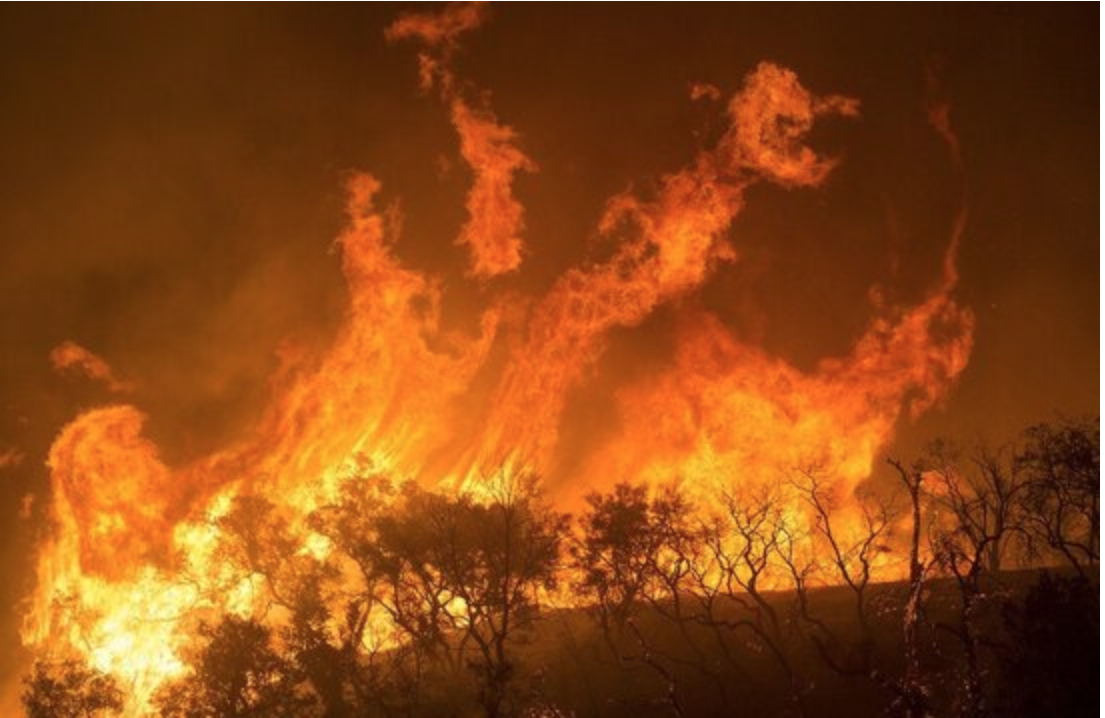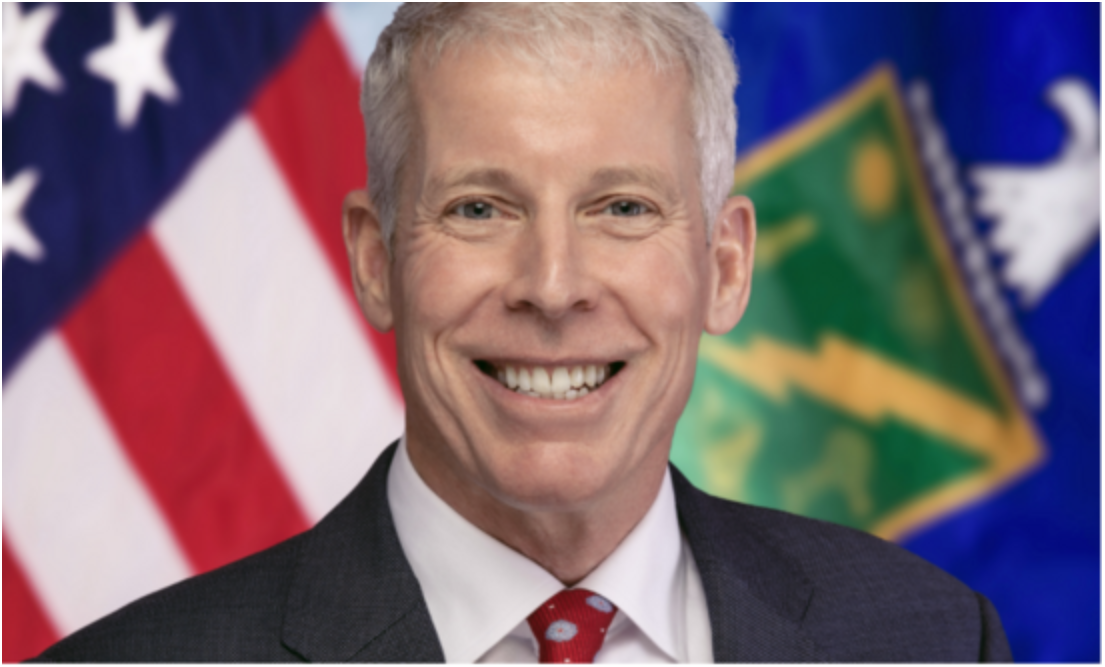I wish I were as clever as Shakespeare when it comes to elegantly stinging insults. Because “soul-less liars,” “shameless grifters,” “fascist knuckleheads,” and “fucking morons” get stale after 10,000 repetitions, no matter how accurate each and every utterance of them is when referring to Donald Trump and his gang of cabinet members.
One of his top minions was at it again this week, cutting federal money to a prestigious institution. In this case it was $4 million for climate-related research at Princeton partnered with the National Oceanic and Atmospheric Administration. The offense? It seems to be simply that it IS climate-related research.
Last week, according to The New York Times, several federal agencies announced they would pause dozens of research grants at Princeton. NOAA’s annual climate research budget is about $220 million. Of the cuts, the excuse given by the office of Commerce Secretary Howard Lutnick, for whom $4 million is lunch money, is that Princeton’s research in one project costs too much and another “promotes exaggerated and implausible climate threats.” This, the statement asserts, contributes to “climate anxiety,” which is a growing problem among youth. What’s actually being said is we-don’t-want-your-science-we-want-our-science.
One of the reasons climate anxieties are growing can be seen in pernicious phrases in the Commerce Department’s own statement regarding two of the defunded Princeton programs:
Climate Risks & Interactive Sub-seasonal to Seasonal Predictability: This cooperative agreement suggests that the Earth will have a significant fluctuation in its water availability as a result of global warming. Using federal funds to perpetuate these narratives does not align with the priorities of this Administration and such time and resources can be better utilized elsewhere.Advancing Prediction: A Regional Coupled Atmosphere-Ocean Model for High Resolution Physical Process Studies of the Air Sea Interface: This cooperative agreement has used its resources to assess risks associated with climate change, including alleged changes to precipitation patterns and sea-level rise. It also aims to address coastal inundation while other more targeted research efforts are addressing this issue. Additionally, the cost of simulating this program’s specific atmosphere-ocean-wave interactions is exceedingly high, diverting resources from more practical and cost-effective solutions.
Denier language. The priorities of this administration of course do not align with certain “narratives” and “alleged changes.” After all, Trump has never walked back his “Chinese hoax” assertion about climate. Indeed, he this week signed an executive order targeting state climate policies he doesn’t like, sneeringly putting “climate change” in quotation marks. He is pushing for digging more coal. And he’s got a team eager to please.
EPA Administrator Lee Zeldin has done some sneering of his own, arguing that money the Biden administration put into addressing climate was wasted and warnings about perilous impacts are hype. One of his “five pillars” of the EPA mission going forward includes pushing “American energy dominance”—code for fossil fuel and nuclear expansion. None of the pillars includes climate.
Meanwhile, Energy Secretary Chris Wright says he accepts that the climate is changing, but he doesn’t act like it. Indeed he doesn’t think climate should be in the government’s top 10 priorities, and he’s promoting more, more, more extraction and burning of fossil fuels.
And the Interior Department has Doug Burgum at the helm, a long-time friend to fossil fuel barons, ready and able to carry out Trump’s and the industry’s wishes on public lands.
This delusion-powered agenda is what contributes the “climate anxiety” that Mr. Lutnick pretends to lament. And it’s not just young people, though they obviously have more to lose than we elders. What gives us anxiety isn’t knowing the truth of what’s happening. It’s that these guys are determined not merely to push aside attempts to understand and address the climate crisis, but to diligently work at making it worse. No insulting words, even Shakespearean, will do. That these men hold such posts is the ultimate insult.
—Meteor Blades
Related: America's climate anxiety, mapped
WEEKLY ECO-VIDEO
RESOURCES & ACTION
- DOGE Impact Tracker. Capital & Main’s tool for scrutinizing the slaughter of jobs and agencies being carried out in the name of efficiency.
- What's the Best Way to Feed Backyard Birds? Sierra magazine’s advice.
- State Climate Policy Dashboard. A project of Climate-XChange, this site compiles all state-level climate policy information, including emissions data. You can easily compare policies across states or view the entire policy landscape within a state.
- Climate Change Laws of the World. A comprehensive database of national-level climate change legislation and policies globally.
- National Caucus of Environmental Legislators Bill Tracking. Updated every Monday, this interactive tool allows users to search a collection of U.S. environmental legislation.
- Find Climate Spending Near You from Grist. This was begun during the Biden administration.
GREEN BRIEF
The State(s) of Distributed Solar
Earlier this month, the folks at the Institute for Local Self-Reliance published their latest state-by-state report on distributed solar — that is, non-utility scale solar, whether on individual rooftops or via community projects. Here’s what they have to say about that: “Many individuals who cannot go solar themselves can subscribe to a community solar garden. These solar arrays offer the same electric bill stability and savings as rooftop solar, but operate remotely under a subscription model.”
Last year, 32 gigawatts of new solar generating capacity was installed in the United States, with 5.2 GW (17% of the total) being distributed solar, the rest utility-scale operations.
ISLR measured each state’s distributed solar saturation with a tally of watts per capita, as you can see in the map below.


What their analysis reveals is that in 23 states and the District of Columbia, about one in every 25 households now has rooftop solar (a state-distributed solar saturation of more than 100 watts per capita). That’s up from 21 states in 2023. The analysis below assumes average of 2.6 persons per household and a 6.5-kilowatt rooftop solar system.
- 20 watts per capita is equivalent to rooftop solar on 1 out of every 125 households
- 100 watts per capita is equivalent to 1 out of every 25 households
- 200 watts per capita is equivalent to 2 out of every 25 households
- 300 watts per capita is equivalent to 3 out of every 25 households
- 500 watts per capita is equivalent to 1 out of every 5 households
The ISLR report found momentum for community solar is rising, but not every state is friendly to such projects. A growing number of states once friendly to rooftop solar have become less friendly or flat-out antagonistic. This has typically taken the form of reductions in the benefits of net metering or tacking on grid fees, making investment in rooftop panels less financially appealing than it has previously been. To these obstacles, the Trump administration added another last Friday, an executive order commanding an end to some states’ energy and climate policies that he views as being out of line with federal law and prerogatives.
Even so, momentum for distributed solar remains strong in nearly half the states. ISLR takes a deeper look at the nine of them.
Related: Why Utility Execs Hate Distributed Solar and The 2025 Community Power Scorecard
—Meteor Blades
RESEARCH & STUDIES
- Rising temperatures reduce the predictability of agricultural drought. The study published in Nature Climate Change found with a computer model that global temperature rises of 2°C (3.6°F) or 3°C (5.4°F) would cause a significant decrease in the predictability of agricultural drought in more than 70% of the global land area.
- Partnerships with Indigenous Peoples for an ethical bioeconomy, an exploration published by Nature Communications. The World Health Organization (WHO) reports that about 40% of the commercial drugs today derive from plants and Traditional Medicine. As biotechnology provides new supply chains to these medicines, Indigenous Peoples and Local Communities raise considerations regarding their fair and equitable use and the potential of synthetic biology to disrupt the local production that sustains their ways of living. This topic has historically divided biotechnologists and Indigenous people. However, safeguarding the biodiversity that provides these life-saving medicines is a shared responsibility and is of interest to all parties.
- ”Alarming” microplastic pollution in Europe's great rivers. Fourteen simultaneous studies published in the journal of Environmental Science and Pollution Research found "alarming" levels of microplastics in nine major rivers across Europe.
- The Great Mangrove Migration: How Warming Waters Are Rewriting the East Coast. In a March 2025 report, a field team surveying tidal marshes near the Florida–Georgia border in 2024 found red mangroves (Rhizophora mangle) and black mangroves (Avicennia germinans) respectively growing 50 miles and 14 miles farther north than their previously documented range, constituting the first record of naturally occurring mangroves in Georgia.
HALF A DOZEN OTHER THINGS TO READ (OR LISTEN TO)
Experts dispute claim dire wolf brought back from extinction by Victoria Gill at the BBC. There was a magnificent, snow-white wolf on the cover of Time Magazine — accompanied by a headline announcing the return of the dire wolf. This now extinct species is possibly most famous for its fictional role in “Game of Thrones,” but it did exist — more than 10,000 years ago -—when it roamed across the Americas. The company Colossal Biosciences is behind today's headlines. It announced that it used "deft genetic engineering and ancient DNA" to breed three dire wolf puppies and to "de-extinct" the species. But while the young wolves — Romulus, Remus, and Khaleesi — represent an impressive technological breakthrough, independent experts say they are not actually dire wolves. Zoologist Philip Seddon from the University of Otago in New Zealand explained the animals are "genetically modified grey wolves." Related: These fluffy white wolves explain everything wrong with bringing back extinct animals
Massachusetts home-electrification pilot could offer a national model by Sarah Shemkus at Canary Media. A first-of-its-kind pilot to electrify homes on Cape Cod and Martha’s Vineyard is set to finish construction in the coming weeks — and it could offer a blueprint for decarbonizing low- and moderate-income households in Massachusetts and beyond. The Cape and Vineyard Electrification Offering is designed make it financially feasible and logistically approachable for households of all income levels to adopt solar panels, heat pumps, and batteries, and to realize the amplified benefits of using the resources together. These technologies slash emissions, reduce utility bills, and increase a home’s resilience during power outages, but are often only adopted by wealthier households due to their upfront cost. “We are going to be advancing this as a model that should be emulated by other states across the country that are trying to achieve decarbonization goals,” said Todd Olinsky-Paul, senior project director for the Clean Energy Group, a nonprofit that produced a new report about the program. In total, the program is providing free or heavily subsidized solar panels and heat pumps to 55 participating households, 12 of which also received batteries at no cost. “This is the first and only instance where solar and battery storage are being presented in combination with electrification and traditional efficiency,” Olinsky-Paul said. “Instead of having several siloed programs, it’s all being presented to the customer in a package, which makes everything work together better.”


Trump Team Proposes Ending Clean Energy Office, Cutting Billions by Ari Natter at Bloomberg Green. The Department of Energy has proposed shutting down its Office of Clean Energy Demonstrations and cutting $9 billion in awards for programs regarding carbon capture, direct air capture, solar, and hydrogen. Under the plan, which isn’t final, the $27 billion agency’s 250-person staff would be reduced to 35. About $10 billion in projects, including $3 billion for so-called hydrogen hubs, would be kept “as is” and transferred to other parts of the Energy Department. Among the funding identified for potential elimination are billions of dollars for hubs in California, the Pacific Northwest, the Mid-Atlantic and the Midwest, while hubs in Texas, Appalachia, and Minnesota, North Dakota, and South Dakota would be spared, according to documents seen by Bloomberg. The plan also recommends keeping $3.5 billion for advanced nuclear reactor projects and $1.9 billion in industrial demonstration program projects. Related: Clean Energy Already Has Big Trade Barriers. Now Comes Trump
Trump’s trade war with China puts $12.8B in US soybean exports at risk by Mónica Cordero at Investigate Midwest. Soybeans are expected to be among the hardest-hit commodities in the Chinese market, mirroring the fallout from Trump’s trade war. Iowa, Illinois, and Minnesota — leading soybean producers — collectively sold about $12.8 billion worth of soybeans to China in 2024. That figure is now at risk due to Beijing’s retaliatory measures. “Farmers are frustrated. Tariffs are not something to take lightly and ‘have fun’ with,” Caleb Ragland, president of the American Soybean Association and a soy farmer from Magnolia, Kentucky, said in a statement. “Not only do they hit our family businesses squarely in the wallet, but they rock a core tenet on which our trading relationships are built, and that is reliability,” Ragland said. He noted that soybeans — America’s top export crop — are particularly vulnerable to trade disruptions with China, their largest market, and that many producers still haven’t fully recovered from the damaging effects of the 2018 trade war, which will only deepen their economic challenges.


The Extraordinary Reason Why Scientists Are Collecting Sea Turtle Tears by Benji Jones at Mother Jones. In late spring and early summer, female sea turtles crawl out of the ocean under moonlight to lay their eggs in the sand, often returning to the same beach on which they were born many years earlier. Sometimes when they do, researchers like Julianna Martin are watching patiently from the shadows. Martin, a PhD student at the University of Central Florida, has for years been analyzing sea turtle tears. On several summer nights in 2023 and 2024, she staked out beaches and waited for the turtles to start laying eggs in the sand. At that point, the reptiles enter a sort of “trance,” she said, allowing scientists like her to collect samples, including tears. She said me she would army crawl up to the turtles and dab around their eyes with a foam swab, soaking up the goopy tears they exude. Sea turtles regularly shed tears as a way to expel excess salt from their bodies. Martin examines them to see if they contain a specific kind of bacteria. Such a discovery, she said, could help unlock one of biology’s biggest and most awe-inspiring mysteries: how animals navigate using Earth’s invisible magnetic field.
Inside the EV startup secretly backed by Jeff Bezos by Sean O’Kane at TechCrunch. Jeff Bezos is funding a secretive EV startup based in Michigan called Slate Auto that could start production as soon as next year, according to multiple sources and documents that link the billionaire’s family office to the startup. Slate, which took root in another Bezos-connected company called Re:Build Manufacturing, has been operating quietly since its founding in 2022. The company has hired hundreds of employees while in stealth — many of whom come from Ford, General Motors, Stellantis, and Harley-Davidson. It also has attracted the backing of several other wealthy individuals, including Mark Walter, the controlling owner of the LA Dodgers and CEO of Guggenheim Partners, and Thomas Tull, who is a lead investor of Re:Build Manufacturing. Slate Auto is tackling a big goal: an affordable two-seat electric pickup truck for around $25,000, according to two sources who were granted anonymity to speak about the company’s internal discussions. Leaders inside the company have mentioned the Ford Model T or Volkswagen Beetle as a North Star for the project, according to the people. It has amassed a sizable war chest in service of that goal.
WEEKLY BLUESKY SKEET

ECOPINION
What's up with clean-energy supply chains and global trade? An interview conducted by David Roberts at his Volts substack. In this episode, Roberts talks with Antoine Vagneur-Jones, head of clean energy, trade, and supply chains for BloombergNEF, about the messy world of global clean energy supply chains. The two men explore China's manufacturing dominance, the faltering quest to "onshore" production in Western countries, and why blanket tariffs often undermine the very goals they're supposed to achieve.
Mammoth de-extinction is bad conservation by Nitin Sekar at Ars Technica. The start-up Colossal Biosciences aims to use gene-editing technology to bring back the woolly mammoth and other extinct species. Recently, the company achieved major milestones: last year, they generated stem cells for the Asian elephant, the mammoth’s closest living relative, and this month they published photos of genetically modified mice with long, mammoth-like coats. According to the company’s founders, including Harvard and MIT professor George Church, these advances take Colossal a big step closer to their goal of using mammoths to combat climate change by restoring Arctic grassland ecosystems. Church also claims that Colossal’s woolly mammoth program will help protect endangered species like the Asian elephant, saying “we’re injecting money into conservation efforts.” In other words, the scientific advances Colossal makes in their lab will result in positive changes from the tropics to the Arctic, from the soil to the atmosphere. Colossal’s Jurassic Park-like ambitions have captured the imagination of the public and investors, bringing its latest valuation to $10 billion. And the company’s research does seem to be resulting in some technical advances. But I’d argue that the broader effort to de-extinct the mammoth is — as far as conservation efforts go — incredibly misguided. Ultimately, Colossal’s efforts won’t end up being about helping wild elephants or saving the climate. They’ll be about creating creatures for human spectacle, with insufficient attention to the costs and opportunity costs to human and animal life.


Cutting Conservation Funding Endangers our Food System by Sarah B. McClure at Common Dreams. As part of the Trump administration’s overhaul of the U.S. Department of Agriculture, funding for several programs, including conservation contracts and local food purchasing for schools, was cut or frozen. The lack of funding of these and uncertainty for other programs is already having a chilling effect on farmers and our food systems, and the impacts have been immediate and wide-ranging. These programs support critical conservation initiatives in agriculture— from assisting local farms and sustainable agriculture research to farmer technical aid. These local programs also support smaller-scale farmers to maintain local or heritage breeds such as Galloway cattle or Tamworth pigs that are not suitable for large-scale, industrial agriculture. As a result, farms and livelihoods throughout the country are threatened. These programs provide vital support for agricultural infrastructure and long-term sustainability including the diversity of food available to the public.
Data under duress, an editorial from Nature Climate Change. Soon after the Trump administration took office, climate data and analytical tools were removed from many government websites, including information related to environmental justice and climate data needed by farmers. Following this were severe cuts to government funding and agencies, including staffing at the National Oceanic and Atmospheric Administration (NOAA) and the National Aeronautics and Space Administration (NASA), which have stopped larger projects around climate modeling and forecasting, with consequences felt on the other side of the world. These cuts have also impacted data collection and monitoring that inform climate-sensitive sectors ranging from disaster preparedness to fisheries. Future cuts are also planned, including those threatening the Mauna Loa observatory and CO2 record. [...] The realities of climate change have clearly illustrated how connected the world is, both through the shared global nature of climate as well as through phenomena such as teleconnections, which link processes and impacts across large distances. All levels of society, including scientists and politicians, must harness the connection inherent in nature to adapt to and mitigate climate change, and ensure that the necessary data are there to support decision-making.
My message from prison: Just Stop Oil may be ending civil disruption, but the fight must go on by Indigo Rumbelow at The Guardian. After three years, Just Stop Oil is ending its campaign of non-violent civil disruption: we are hanging up the high-vis. But this does not mean the resistance is over. Sitting here in a prison cell in HMP Styal, I am still demanding an end to oil and gas. Every prison key that rattles, every door that is bolted shut, every letter that is read by the prison staff — it all reminds me that 15 Just Stop Oil supporters are currently locked up for refusing to obey governments whose climate inaction is frankly murderous. There has been some progress. The Labour government was elected last year on a manifesto including the pledge that they will “not issue new licences to explore new [oil and gas] fields.” This is a victory for civil resistance and the climate movement. To everyone who donned an orange high-vis, who leafleted on the streets, who got arrested for their actions, ran a social media page, gave a talk in a community center, or answered a phone call from someone in custody, I say: you are part of this change. But the new government is falling far short of what needs to be done in order to avert catastrophic climate change. Continuing with oil and gas for decades is an act of violence that will unfold over the coming years; it is the ultimate betrayal of the people. They are telling us they do not care.
A Faster Future: Unbreaking Passenger Rail to Deliver the Rapid Service We Need by Nolan Hicks at Streetsblog. Getting people onto trains has never been more important. It’s simple physics. A thousand-foot commuter train can hold 1,000 people; a string of cars 1,000-feet long would hold no more than 100 people, even if each car was smaller than a Mini Cooper. Getting people back on trains and onto transit is essential to bringing our cities back to full health post-pandemic and building beyond into the future. Speeding up and expanding service is proven to grow ridership on existing routes and induce mode-change, fueling a virtuous cycle that boosts transit and our cities. The infrastructure we inherited, had we consistently upgraded and funded it like the Europeans have done with theirs, would allow many mainline U.S. cities to deliver passenger rail service that rivals what’s found abroad. But our agencies don’t receive the funding to provide it. By necessity, starved agencies focus on survival and have little capability to present a forward-looking case for what properly funded transit can provide. This means politicians face little pressure to do more than ensure the current system doesn’t collapse. Stasis ensues. Momentum — released Wednesday by the Marron Institute at New York University — is an exhaustive 156-page effort to examine the causes of this logjam and to propose a dramatic set of reforms to break it wide open.


OTHER GREEN STUFF
Trump’s trade war with China puts $12.8B in US soybean exports at risk • Chemical Industry Asks Trump for Exemption From Pollution Limits • ‘Clean water,’ ‘equity,’ ‘microplastics’ and other words banned in leaked USDA memo • The Amazon rainforest emerges as the new global oil frontier • American Baseball Teams Should Stop Helping Big Oil Sportswash the Climate Crisis • He Worked to Clean up Superfund Sites. The Trump Administration Fired Him • Trump wants a world without the EPA. Here’s what that would actually look like • Millions of Americans believe they’re safe from wildfires in their cities. New research shows they’re not • It’s Getting Harder to Build a Solar Farm In America’s Sunniest State • Honeybee Deaths Surge In U.S.: 'Something Real Bad Is Going On'















Comments
We want Uncharted Blue to be a welcoming and progressive space.
Before commenting, make sure you've read our Community Guidelines.